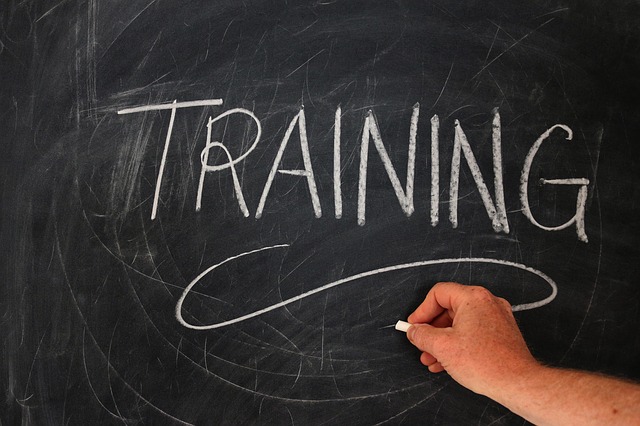Since I last blogged for SmartBrief, much has changed in the US. Shortly, we’ll have a new president, with new ideas and a new way of doing things. The jury is out on whether this will improve or damage education; all we know is that 2017 will look very different.
That said, for 2017, I choose to operate through a continuous improvement lens, rather than through a deficit model. So, over the course of this piece, let’s focus on resolutions for professional development.
Resolution: Virtual PD will move toward virtual PDL. In my organization, we’ve been thinking a lot about how to harness the wonders of the virtual realm, and all the tools that accompany it, to make virtual professional development most meaningful. We’ve learned that a webinar, by itself, rarely leads to changes in practice, and just like a Twitter chat provides great information, and a start to making change, by itself, it isn’t true professional development for learning — PDL. As I’ve written about before, we’re working to find new tools that allow for more interaction, push learners toward more action-taking, and help virtual PD move toward virtual PDL. One tool I love is a portal called Shindig, which allows for webinar participants to engage in both large and small group discussions, provides attendees with the opportunity to go up on the “stage” with the facilitator, and has a number of messaging and presentation tools that makes the webinar experience much more fun, and more likely to stick with learners and lead them to change practice. Of course, that also means it is more complicated, but in fairness, isn’t all worthwhile learning complicated? We’ll be looking to make virtual professional development more focused on the “learning” throughout 2017.
Resolution: We’ll continue to value the fact that learning is continuous, and move further from the one-day PD model. Our agency has done great work building more follow-up into the professional learning opportunities we put together. We more regularly encourage our consulting team to design learning experiences that span multiple days, and we hope that our facilitators actively engage with their participants throughout the learning sessions and beyond. Over the last few years, we’ve also worked to build in opportunities for visitations — seeing the learning solidifies the learning, right? — and have looked to move past the “one-year learning” model, opting instead for continuing strands of professional learning, and reconvening groups for as many years as participants feel they are necessary. While the regional nature of our organization makes this easier, none of this is impossible at a district or school level. Again, if learning requires action, which we know it does, then we have to realize that opportunities for follow-up are the only ways that learning will ever happen. Otherwise, we are simply planting a seed and expecting it to grow immediately without understanding that regular water — reflection — and sunlight — coaching/support — are needed for the best growth. We’ll look to keep encouraging a slow and steady move away from one-day professional learning as we continue into next year, while at the same time recognizing that every form of learning has its value.
Resolution: We’ll use the “more voices to meet more needs” model to cultivate expertise and design learning opportunities. The “more voices to meet more needs” model is a simple one. The idea is that the more well-rounded the needs assessments you conduct, the more likely you’ll come closer to meeting everyone’s learning needs, or at least the vast majority. While it is a big task to be sure, we’ve found that hearing needs from all levels of an organization makes us more prepared to not only consider professional development categories/themes, but also provide insight to facilitators into the types of work that districts, and individual educators, really need. Along with more well-rounded support, the “more voices, more needs” model also, by its nature, gets people really invested in the learning and its design while it is still in its infancy. And, as we know, one of the best ways to engage people in learning is to have them build the learning opportunity from the start. After all, we’re more likely to see something through to the end when we’ve invested time, energy and other resources into it from the beginning. And another benefit for our districts and region? By listening to more voices, we are also building more connections to provide a greater variety of expertise to our region at large. Whether it be through district visitations, phone calls, face-to-face conversations or surveys, we’ll continue to refine our work in this area as our new year begins.
Resolutions are a funny thing. The only one who really expects us to keep to them is the one making them. They aren’t laws, or requirements, but like good professional learning, they should stick to us, and make us, at our core, want to hold to them. And that means they need to be truly actionable, and should allow us to engage ourselves, and others, in reaching them. Plus, putting resolutions in writing makes them even more real. I hope that at this point next year, I’ll be able to report on the successes — and failures — we’ve experienced in these three areas. Have a great holiday season and New Year!
Fred Ende (@fredende) is the assistant director of Curriculum and Instructional Services for Putnam/Northern Westchester BOCES in Yorktown Heights, N.Y. Fred blogs at www.fredende.blogspot.com, Edutopia, ASCD EDge and SmartBrief Education. His book, Professional Development That Sticks is available from ASCD. Visit his website: www.fredende.com.
____________________________________
Like this article? Sign up for ASCD SmartBrief to get news like this in your inbox, or check out all of SmartBrief’s education newsletters, covering career and technical education, educational leadership, math education and more.
